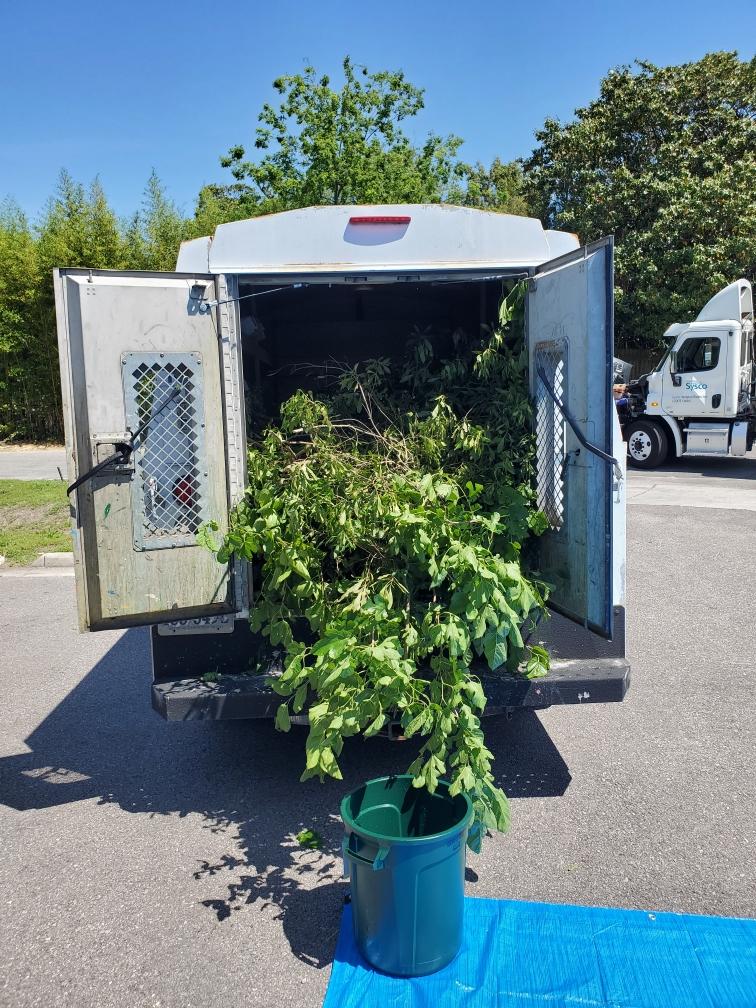Just Browsing! Virginia Zoo Partners With Norfolk Botanical Garden
Have you heard the term “browse” being used in zoos? Browse is a term used for natural plant material that an animal is provided for consumption or enrichment. Browse has many benefits to animals and is becoming more widely used in zoos. While the donation of plant material is not new in this conservation space, Virginia Zoo is grateful for the ongoing partnership with the Norfolk Botanical Garden—now in its second year.

Why do zoos need browse?
Browse is a useful way to supplement the diet of our animal collection and can offer nutritional benefits through proteins, fats, and amino acids. It also offers the opportunity for several animal species to exhibit healthy natural behaviors and extend the use of habitat and time spent foraging for their diet. This can be beneficial for both herbivores and omnivores.
What animals use browse?
One example of a browsing (or leaf-eating) species is our giraffe herd at the zoo! In addition to their daily diet, the giraffes often receive browse branches in their indoor or outdoor habitats. Keeper staff will safely hang entire branches of browse for them to enjoy. Giraffes have long necks, prehensile lips, and a long tongue that helps them to pull individual leaves from branches. Like cows, giraffes are ruminants. This means they have a four-chambered stomach that helps to break down the leaves and plant material they eat. Although they may be one of the biggest, giraffes aren’t the only ones at the zoo that like browse. Some primates, hoof stock, small mammals, and reptiles also enjoy eating browse when offered.
There are also other ways browse can be utilized. Some of our animals, such as birds or big cats, use these plants for enrichment! Our otters might collect small browse pieces and use them to make a comfortable bed to sleep in, while our lions may use it for scent-marking.
Where does the Zoo get browse?
This year, the Virginia Zoo is partnering with the Norfolk Botanical Garden! It’s important that the plants we offer to the animals are safe and non-toxic. Several departments of the Zoo collaborate to ensure that the plant species are correctly identified, non-toxic, and offered to the animals in a safe way. As well as collaborating with Norfolk Botanical Garden to identify healthy plants, we also apply the expertise of our horticulture department, animal care staff, veterinarian, and nutrition manager. This includes making sure the plants have not been sprayed or treated with herbicides or pesticides that may be harmful to the animals, if ingested.
Join a Browse Party!

Last year we had four large donations of safe and healthy plant material during the summer season that we used to feed and enrich the animals throughout the zoo! Animals love fresh browse! A portion of the donations were distributed to the animal care areas the day of arrival. The other portion was used for Browse Parties!
Browse parties are a fun way for volunteers to help prepare the browse for storage in one of our walk-in fridges at the Zoo’s commissary. Leaves or small branches are removed and placed into air-tight bags that are then labeled and stored safely in the fridge for use later. This extends the benefit of our browse donations throughout the summer.
If you are interested in volunteering with us, please visit our website to fill out an application or contact our team at [email protected].
We appreciate our volunteers and friends at the Norfolk Botanical Garden for their involvement in this process. Visit their website and social medias to learn more!